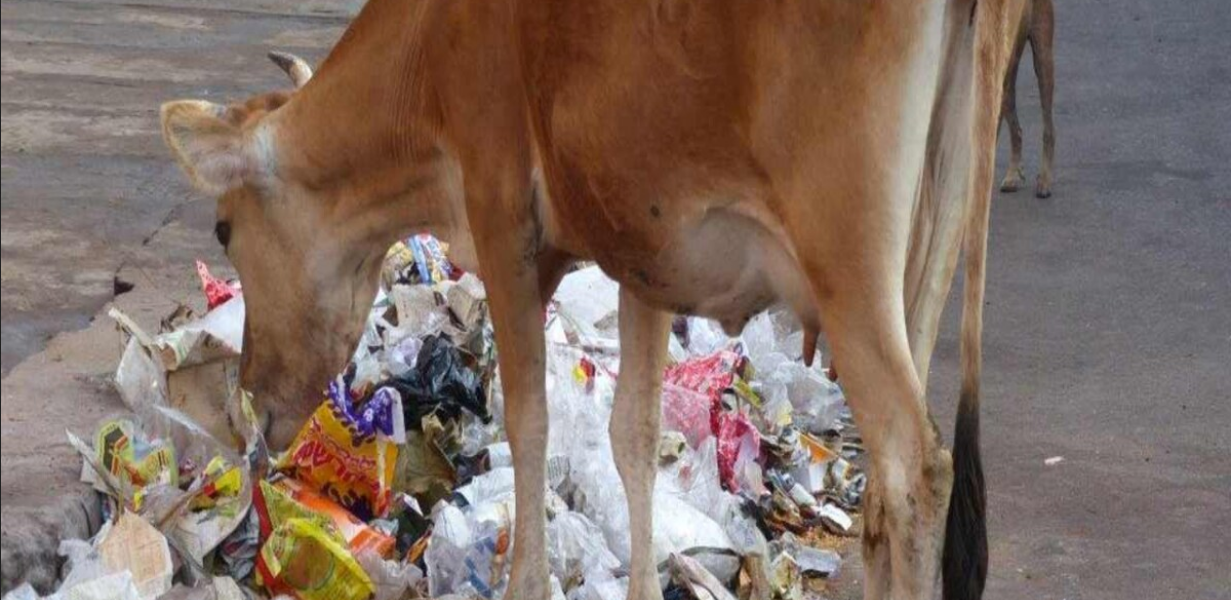Considerable attention has been given to the issue of plastic in India, particularly its perilous consequences for cows that ingest it. When cows consume plastic, it disrupts their regular eating habits, eventually leading them to cease consuming regular food. The intrusion of plastic into their internal organs poses a severe threat, with toxic chemicals like dioxins being discovered in their milk.
Cows, renowned for their highly sensitive sense of smell, rely on this sense for memory, communication, and tracking their calves. Their unique organ, known as ‘Jacobson’s organ,’ serves as an olfactory detector, enabling them to discern unfamiliar smells. Observable behaviors, such as looking up or curling their lips with an open mouth, indicate a cow’s use of Jacobson’s organ in response to an unfamiliar scent. Cows make decisions about accepting or rejecting food and seek nourishment based on their acute sense of smell.

Could the attraction of Indian cows to plastic be linked to their exceptional olfactory abilities? Hypothetically, based on the impact of plastic odors on other species, this seems plausible. A recent European study revealed the presence of nearly ten types of plastics in human stool, underscoring the ubiquity of plastic in water, beer, and seafood.
Oceans, covering seventy percent of Earth’s surface, face widespread plastic pollution, affecting not only predators like fish, sea turtles, and seabirds but also seafloor sediments. Research by Matthew Savoca of Stanford University suggests that some species’ attraction to plastic may be solely due to the emitted odor. This insight challenges the notion that visual cues alone drive species to consume plastic.

In marine species, the triggered sense of smell is related to a chemical called dimethyl sulfide (DMS) and its derivatives. Algae, the foundation of the aquatic food chain, produce DMS. Marine species follow this odor to locate food. Savoca’s experiments reveal that plastics in water rapidly accumulate algae, leading to DMS production. Ocean-weathered plastic emits a thousand times more DMS than in a natural environment, making it highly attractive to marine species.
Drawing parallels, it is plausible that the millions of cows in India are drawn to plastic due to a similar ‘olfactory trap.’ The warm climate in India, combined with the degradation of plastic, may contribute to the release of enticing odors. Research on the specific odors associated with plastics in India is urgently needed, offering potential solutions such as neutralizing specific chemicals to make plastics unappealing to cows.

The urgent imperative is evident; cows consuming plastic not only jeopardize their well-being but also pose risks to consumers of dairy products. While efforts to ban plastic are underway, garbage piles and strewn trash still contain unacceptable amounts of plastics. Initiatives like Swaccha Bharat (Clean India) hold promise for the well-being of cows and the consumers who depend on them for essential products.




